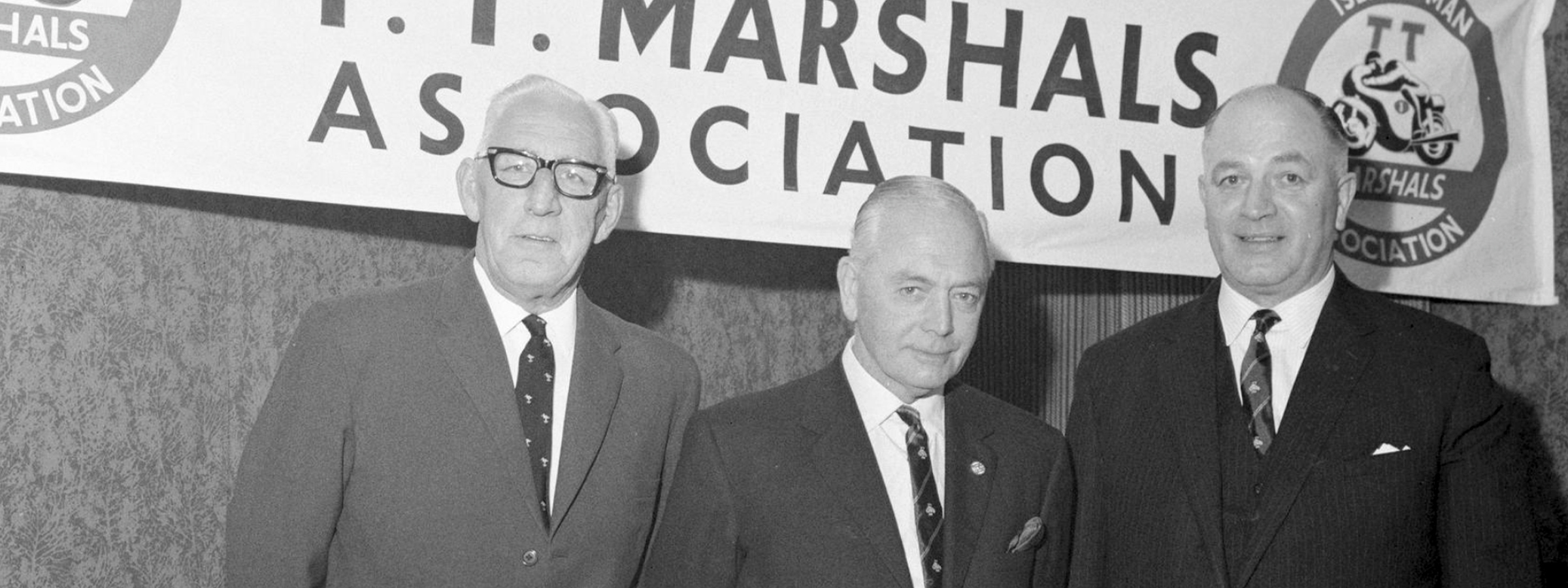A CENTURY OF MARSHALLING
The Manx Grand Prix may be celebrating its 100th event this year, and a longstanding, unchanging aspect of that has been the presence of the marshals through the decades.
The Manx Motorcycle Club actually started out by marshalling for the Tourist Trophy in the earlier 1920s, before moving to running their own race meetings for the Manx Grand Prix, so the challenge was on to gain sufficient numbers to marshal their own event.
In the 1920s, let alone in comparison to today’s numbers, the marshals were literally few and far between for the Manx, with single people spaced out around the course, with little other than a distant telephone point and a temporary sworn-in constable status to carry out the job.

AN ARMBAND WAS WORN BY MARSHALS, IN CONTRAST TO TODAY'S ORANGE JACKETS
The early days saw marshals or shepherds on the remote sections of the mountain course due to the lack of transport, and for them, the role of opening the gates for the first bikes to pass through was a part of the job. That is, of course, until the gates were removed in 1934.
The police force played a crucial part in those first decades, owing to their abilities to deal with serious events with their first aid training. In fact, by 1950 with speeds getting quicker and incidents requiring more specialised attention, the Chief Constable was appointed the MGP Chief Marshal, and so the force controlled the organisation of marshals.

THE POLICE PLAYED A CRUCIAL ROLE IN THE MARSHALS IN THE EARLY DECADES, INCLUDING SIGN-ON, SEEN HERE
This would continue for 12 years, until 1962 when the present day TTMA was formed and took over responsibility for the Manx Grand Prix as well as the TT. To this day though, Marshals continue to have legal powers under the Road Racing Act to allow them to take action where required to secure the safety of the competitors, officials, spectators and the public.
More recently, the Manx Grand Prix was the trial event for a new marshalling sector "00" by the TTMA. In 2022, the Manx Grand Prix was the event that the TTMA chose to trial out a new sector that would reduce delays and ensure suffiicient marshalling levels around the course. The trial was a marked success and now marshals that sign up to this sector can be deployed anywhere around the course which requires extra support both at the Manx and the TT, which used the sector for the first time in 2023. 00 marshals get the opportunity to experience different areas of the course, as well as enjoying the Mountain Course in all its glory, not to mention, playing an integral role in keeping the sessions running efficiently.
Whilst a lot has changed in the working of the TTMA and the marshals around the course, the dedication and excitement for the event and what it stands for remains true. Nothing exemplifies this more than the volume and the passion of marshals involved – there’s no standing alone at the Manx Grand Prix 100 years on.

A century on, the marshalling community continues to grow
A century on and the marshalling community continues to grow with the TTMA always looking for recruits to join their ranks. The process is simple, with new recruits registering online and completing two short training modules. Those who have marshalled at the 2022 Manx Grand Prix or TT, or the 2023 TT can simply sign on for their chosen days by logging into their account. If you want to join the TTMA for the centenary edition of the Manx Grand Prix, you can learn more here and sign up on their website.
Want to know more about the history of the Manx Grand Prix and marshalling? You can purchase 100 Years of the Manx Grand Prix Racing Out of the Shadows










